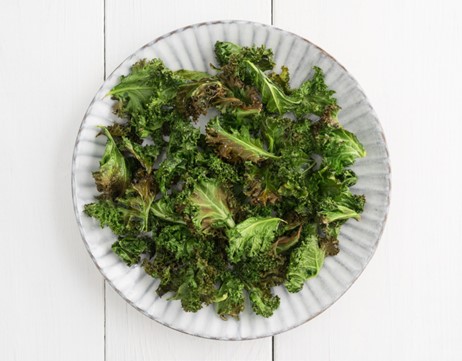
Michigan Fresh: Using, Storing, and Preserving Kale (HNI120)
DOWNLOADAugust 9, 2023 - Joyce McGarry and Laurie Messing
This Document is offered in: English, Arabic Espanol,
Kale belongs to the Brassica family, which also includes cabbage, collards, broccoli and Brussels sprouts.
It is also known as borecole.
Food Safety and Storage
- Wash hands before and after handling fresh produce.
- Leaves vary from dark green to purple to deep Look for firm, deeply colored leaves with healthy stems. Small leaves will be more tender and have a milder flavor than large leaves.
- Store unwashed kale in an airtight plastic bag in your refrigerator’s crisper drawer, where it will keep up to five days.
- Wash leaves under cool running water before using.
- Kale tends to have dirt and grit on the leaves, so wash thoroughly in several changes of cool water.
- To prevent cross-contamination, keep kale away from raw meat and meat juices.
Michigan State University Extension does not recommend canning, freezing or drying kale because of its high water content, which produces a low-quality product.
Ways to Prepare Kale
Add to salads with red pepper, onion and raisins.
Toss chopped kale with cooked whole-grain pasta, pine nuts, feta cheese and olive oil.
Cook chopped kale with garlic and olive oil for 5 minutes; season with salt, pepper and red wine vinegar.
Make kale chips by slicing kale into bite-sized pieces, tossing with olive oil and salt, and baking for 10 to 15 minutes at 350 degrees F.
References
- Andress, E., & Harrison, J. A. (2014). So easy to preserve (Bulletin 989). (6th ed.). University of Georgia Cooperative Extension.
More information



 Print
Print Email
Email






